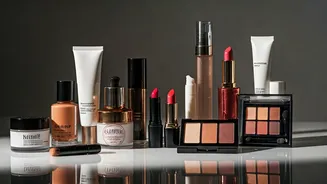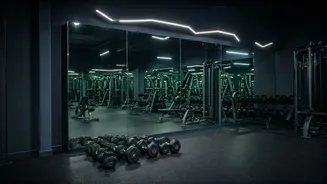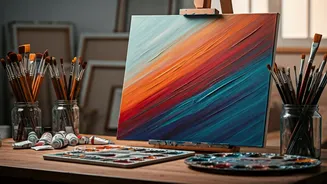Defining Beauty's Essence
Beauty, a complex and subjective notion, is far from a singular concept. It's perceived differently across cultures, shaped by historical context and influenced
by individual experiences. Factors like symmetry, proportion, and even specific colors or textures can be considered beautiful. What's considered beautiful has evolved dramatically throughout history, reflecting societal values and artistic movements. Today, beauty includes physical appearance, inner qualities like kindness, and even the aesthetic appeal of objects, places, or ideas. The quest for beauty reflects a fundamental human desire for harmony, balance, and well-being. It's a reflection of our inherent appreciation for what brings pleasure to the senses and evokes feelings of delight and satisfaction. Beauty is often tied to feelings of pleasure and satisfaction, reflecting a deeper human desire for harmony and well-being.
Cultural Beauty Standards
Cultural beauty standards are exceptionally diverse, varying significantly across the globe. What's considered beautiful in one society might be entirely different in another, highlighting the impact of cultural norms on our perceptions. In some cultures, specific body shapes are favored, while others place more emphasis on facial features or skin tones. Makeup, hairstyles, and clothing styles all play significant roles in shaping beauty ideals. From elaborate tattoos to the use of cosmetics, people express their cultural identities through beauty practices. Historical context is also important; beauty standards shift over time, reflecting changes in fashion, art, and social values. Modern globalization also impacts these standards as they influence each other, leading to a constant interchange of ideas and ideals. Understanding these diverse standards enhances cross-cultural understanding and appreciation for different beauty perspectives.
The Science of Beauty
Beauty is also deeply rooted in scientific principles. Neuroscience reveals how the brain processes and responds to attractive stimuli, and the concept of symmetry often correlates with attractiveness. Evolutionary psychology suggests that the preference for certain physical traits might stem from their association with health and reproductive success. The field of dermatology delves into the biology of skin, hair, and nails, providing insights into maintaining their health and appearance. Understanding these scientific underpinnings helps clarify why certain features are commonly considered attractive. The health aspects of beauty include the impact of nutrition, exercise, and lifestyle choices. Science has advanced cosmetic formulations and beauty treatments that help enhance appearance. These scientific advancements help people to embrace the concepts of looking and feeling their best.
Beauty & Self-Care
Beauty and self-care are inextricably linked. Self-care practices like skincare routines, regular exercise, and balanced diets contribute to both physical appearance and overall well-being. Skincare routines, ranging from simple cleansing to elaborate treatments, contribute to maintaining healthy, radiant skin. Exercise not only helps to maintain a healthy weight but also boosts circulation and improves skin health. A balanced diet filled with vitamins, minerals, and antioxidants nourishes the body from within, promoting healthy hair, skin, and nails. Beyond these physical aspects, self-care encompasses mental and emotional well-being. Taking time for activities that bring joy and reduce stress, such as meditation or spending time in nature, positively impacts overall health and contributes to a positive self-image. It’s an investment in holistic wellness, combining physical health with mental and emotional balance.
Beauty Through Expression
Beauty acts as a powerful form of self-expression. Fashion, makeup, and hairstyles are some ways people use to express their personality and style. Makeup provides a versatile tool for enhancing features, experimenting with colors, and adapting to different styles. Clothing, from casual wear to formal attire, can express one’s mood, social affiliations, or cultural background. Hairstyles provide a means of personal expression, allowing individuals to show their identity through color, cut, and texture. Tattoos and body modifications can be used to display beliefs and experiences. Through these modes of expression, individuals are empowered to construct their personal brand, showing their identity. Whether it's a bold fashion statement, a subtle makeup look, or a meticulously crafted hairstyle, beauty helps build confidence and show one's inner self to the world. Beauty is a means to communicate who you are.
Ethical Beauty Practices
Ethical considerations are increasingly important in the beauty industry. Consumers seek products that are sustainably sourced, cruelty-free, and ethically produced. Sustainability includes environmentally friendly packaging and formulas that minimize waste. Cruelty-free products are those not tested on animals, indicating a concern for animal welfare. Fair trade practices also ensure workers in the supply chain are treated fairly and paid a living wage. Ethical beauty embraces transparency, allowing consumers to make informed choices. This includes companies disclosing their ingredients, manufacturing processes, and labor practices. Consumers are also driving ethical standards by supporting brands that align with their values. Ethical beauty is not just about the products; it is about building a more responsible and equitable industry. The goal is to make beauty a reflection of values.













